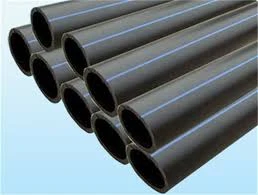Dùbh . 16, 2024 00:02 Back to list
ppr pipe
Understanding PPR Pipes A Comprehensive Guide
In the construction and plumbing industries, polypropylenes have transformed the way we approach piping solutions. One such innovation is the PPR (Polypropylene Random Copolymer) pipe, which has gained immense popularity due to its numerous advantages. This article seeks to delve into the features, benefits, applications, and installation of PPR pipes.
What are PPR Pipes?
PPR pipes are made from polypropylene, a thermoplastic polymer. The random part of its name refers to the specific molecular structure that enhances its durability and resistance to thermal stress. PPR pipes are manufactured in various diameters and lengths, making them versatile for different applications. Their lightweight nature, combined with high tensile strength, makes them an excellent choice for both residential and industrial plumbing systems.
Key Advantages of PPR Pipes
1. Durability and Longevity PPR pipes are known for their long service life, which can exceed 50 years when properly installed. They are resistant to corrosion, scaling, and biological growth, which can significantly deteriorate other types of pipes over time.
2. Temperature Resistance PPR pipes can withstand high temperatures (up to about 95°C or 203°F), making them suitable for hot water applications. This feature is particularly advantageous in residential hot water systems.
3. Chemical Resistance Due to their robust material composition, PPR pipes are resistant to a wide range of chemicals, making them ideal for industrial applications where chemical exposure is a concern.
4. Ease of Installation The lightweight nature of PPR pipes allows for easy handling, cutting, and installation. Moreover, they can be connected using a fusion welding technique, which creates a seamless joint that enhances the strength of the connection.
5. Eco-Friendly PPR pipes are environmentally friendly. They are 100% recyclable and free from toxic substances, making them safe for potable water applications.
ppr pipe

Applications of PPR Pipes
PPR pipes are incredibly versatile and find applications in various sectors, including
- Residential Plumbing Used for hot and cold water supply systems, as well as heating systems. - Industrial Use Ideal for transporting chemicals, gases, and other fluids due to their chemical resistance. - Agricultural Irrigation Their corrosion resistance and durability make them suitable for irrigation systems, ensuring efficient water delivery. - Food Industry PPR pipes are safe for transporting potable water, making them a preferred choice in food processing plants.
Installation Process
Installing PPR pipes involves a few straightforward steps
1. Preparation Cut the pipes to the required length using a pipe cutter. Ensure the ends are smooth to facilitate a proper fit. 2. Fusion Welding This method utilizes heat to meld the pipe surfaces together. Heaters are used to warm the pipe ends and fittings before they are fused together, creating a strong joint.
3. Testing After installation, it is crucial to test the system for leaks, ensuring that all joints are secure.
4. Insulation In cases where pipes are exposed to temperatures below freezing, additional insulation may be necessary to prevent damage.
Conclusion
PPR pipes have revolutionized the plumbing and construction sectors, offering a combination of durability, resistance, and cost-effectiveness. Their variety of applications, paired with ease of installation, makes them a preferred choice among professionals and homeowners alike. As the demand for reliable and sustainable plumbing solutions continues to grow, PPR pipes stand out as an innovative option catering to modern needs. In summary, their blend of functionality and eco-friendliness positions them favorably in the realm of piping solutions for the future.
-
Durable PP Rigid Sheet: Lightweight, Chemical Resistant Solutions
NewsAug.21,2025
-
PVC Grey Sheet for Extraction: Chemical Resistant & Durable
NewsAug.19,2025
-
Durable PVC Pipe Fittings for Plumbing & Irrigation Needs
NewsAug.18,2025
-
HDPE Steel Belt Reinforced Spiral Corrugated Pipe | High Strength
NewsAug.17,2025
-
HDPE Pipe Fittings: Durable, Leak-Proof Solutions
NewsAug.16,2025
-
Premium CPVC Sheet: High-Temp & Chemical Resistant Solutions
NewsAug.15,2025

